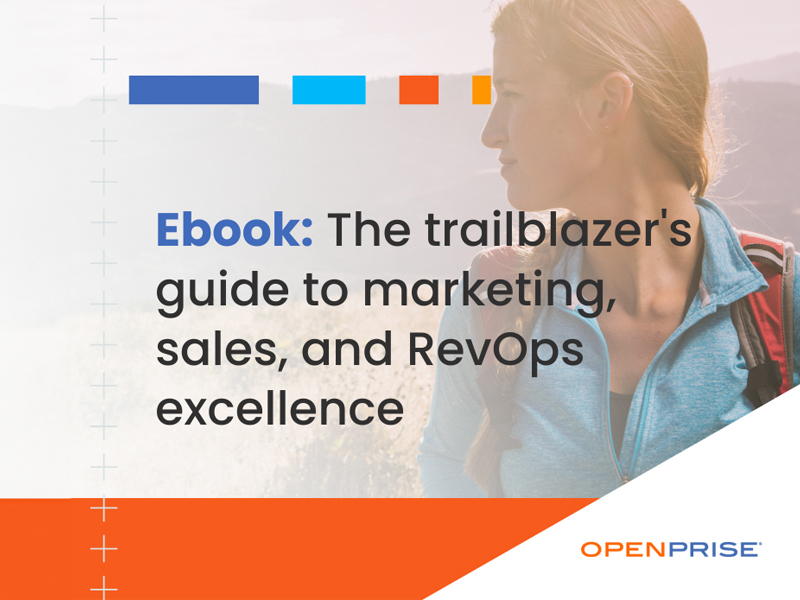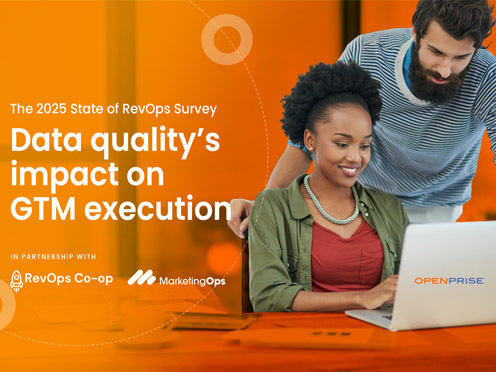
Webinar Recap: 2025 State of RevOps Survey: Data quality’s impact on GTM execution
Struggling with data quality headaches?
Facing misaligned expectations between leadership and Ops? How about feeling crushed by the pressure to grow pipeline—without throwing cash at your bloated tech stack?
If so, you’re not alone.
In a recent Marketing Ops webinar, three GTM ops experts—Camela Thompson (head of marketing at RevOps Co-op), Ali Rastiello (VP of RevOps at Health Catalyst), and Jess Kao (senior marketing ops leader)—shared how RevOps can clean up data chaos, get management on board, and power growth with fewer resources.
Camela has spent over 15 years in the operations trenches and knows what it takes to align marketing and sales. Ali has led Ops at high-growth companies, surviving budget cuts while still delivering revenue. And Jess has architected data strategies for global enterprises—she’s the go-to resource for scalable, bulletproof systems.
But this session wasn’t just about hypothetical frameworks or marketing theory. It was an unfiltered conversation on key findings from the 2025 State of RevOps Survey: Data quality’s impact on GTM execution, including:
- Why there’s a disconnect between leadership and ops around data quality—and how to fix it
- The monthly updates RevOps teams should be giving executives to stay aligned
- Plain-language “translation” that helps you secure budget and cross-functional buy-in
Must-have processes for automating data hygiene so you can focus on real insights, not busywork
Bridging the data quality disconnect: leadership vs. Ops
A major theme emerging from the 2025 State of RevOps Survey—and echoed by our expert panel—is the disconnect between leadership and Ops around data cleanliness. All three speakers emphasized that while executives might demand data-driven decisions, they often don’t understand what’s technically possible, nor do they realize how much effort goes into maintaining “clean” data.
“Data is never a ‘set it and forget it.’ It’s a living, breathing thing—just like a building that has to absorb earthquakes.”
– Jess Kao
She explained that strategic pivots may fail if the database isn’t structured to support those new buyer personas. Meanwhile, Ali suggested that Ops teams need strong active listening skills to interpret leaders’ goals, discover gaps in the data, and then convey realistic options.
Key takeaway
Ops must proactively clarify what’s achievable, translating technical jargon into real-world outcomes that matter to executives—like how clean data correlates to better account targeting or a more accurate forecast.
From “broken” to “better”: showing incremental improvements
Instead of framing data cleanup as an 18-month overhaul, the panel advised taking an incremental approach to show quick ROI. Jess illustrated how tying each data enhancement project to a revenue outcome—like improved segmentation or faster pipeline generation—makes executives more willing to invest.
“A 10% improvement in data quality is better than 5%. 20% data cleanliness is better than 10%. Executives want to see progress. We’re not launching rocket ships to the moon; we just need to get directionally accurate.”
– Jess Kao
Camela pointed out that when Ops teams quantify small wins (e.g., a 10% increase in normalized titles leading to improved email engagement), they build momentum and executive trust.
“Focus on incremental improvement—progress over perfection.”
– Attendee comment
Key takeaway
Highlight each “mini-victory” to leadership. By repeatedly connecting data hygiene tasks to better business outcomes, you open the door to broader, long-term projects.
Monthly updates: keeping leadership in the loop
Another key recommendation was providing regular, proactive updates on data health rather than waiting until executives raise concerns. Ali suggested a recurring “data health report” that details how many new high-quality records were added, which segments need attention, and where leadership assistance is required.
“An executive is never going to ask, ‘How many CMO titles do I have in my database?’ They’re going to ask more basic questions, and then it’s up to you to say, ‘Let me show you some data around who we can reach and who we can’t, and what we need to do from a targeting perspective to get more of these people in.’”
– Ali Rastiello
Jess noted that consistent communication helps Ops maintain visibility and underscores the ongoing nature of data hygiene.
Key takeaway
Make data health a monthly briefing item. Sharing progress (and roadblocks) keeps everyone aligned and reduces future frustration when new insights or pivots require fresh data.
Translating “geek speak” for non-technical audiences
All three speakers emphasized that while executives often demand data-driven decisions, they may not understand what’s technically feasible or the effort required to maintain ‘clean’ data.. When you talk about duplicates or field mapping, senior leaders might tune out. Instead, give them vivid analogies (like the “rollercoaster gap in the tracks”) to show the practical effect of missing or bad data.
“I challenge everyone to think about the words that they’re using to executives. Look at how you’re talking about the operations stuff. Look at the geek speak and the data that you’re talking about and ask, ‘What am I trying to accomplish and why?’ And I think that will lead you to the path of executive-speak.’”
– Jess Kao
Camela added that, once leaders see how shoddy data impairs messaging, campaigns, and forecasting, they’re more receptive to investing in data enrichment or new processes.
Key takeaway
Whether it’s a building analogy or referencing a rollercoaster track, frame data shortfalls with tangible business consequences. That’s how you gain buy-in for much-needed improvements.
Data as a driver for strategic insights
The webinar closed with a reminder that truly clean data isn’t just about feeding the correct numbers into a board deck; it’s about empowering strategic moves. Camela observed that when operators automate routine hygiene, they can focus on spotting patterns—like which industries or tech stacks yield high-value leads—to guide leadership toward growth.
“When I’ve heard ‘they don’t trust the data,’ what I’ve seen is they don’t study the data to understand it. How can they expect to trust what they don’t know?”
– Attendee comment
Automating grunt work allows Ops to focus on analyzing trends and driving data-backed decisions rather than reacting to guesswork..
Key takeaway
Elevate Ops’ role from “system fixer” to strategic advisor. High-quality data is the foundation, but the ability to spot patterns and make recommendations is what truly influences the company’s trajectory.
RevOps action plan: Key takeaways for data-driven success
This MOPros webinar on the 2025 survey findings captured the root causes of data quality challenges—from misaligned executive expectations to siloed processes—and provided tactical fixes for bridging the gap.
Here’s the panel’s parting advice:
- Aim for progress, not perfection – Show quick, measurable wins.
- Report data health regularly – Keep leadership informed monthly.
- Use plain language – Illustrate the why behind data changes.
- Become a strategic resource – Interpret trends to guide decisions.
Learn more about how expert RevOps navigate inconsistent data and endless stakeholder disagreements: watch the full session on demand.














